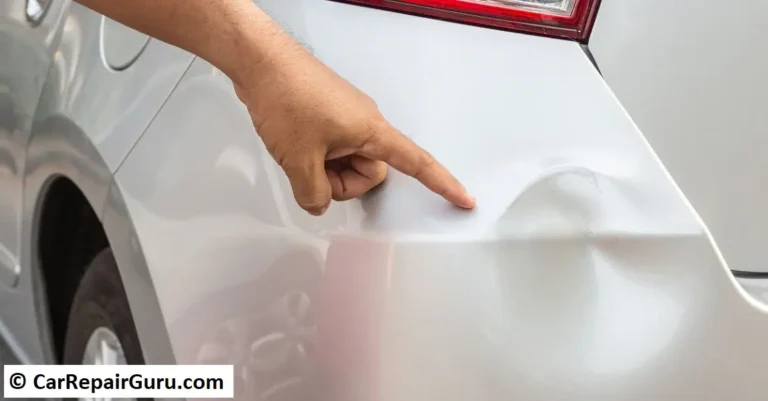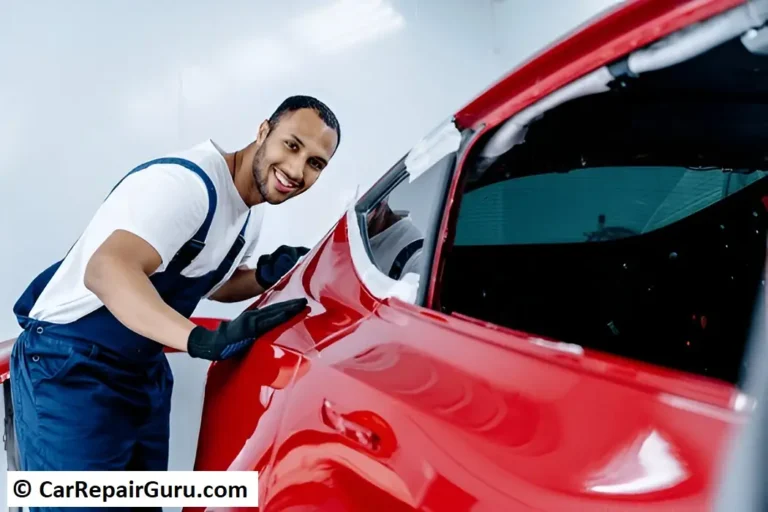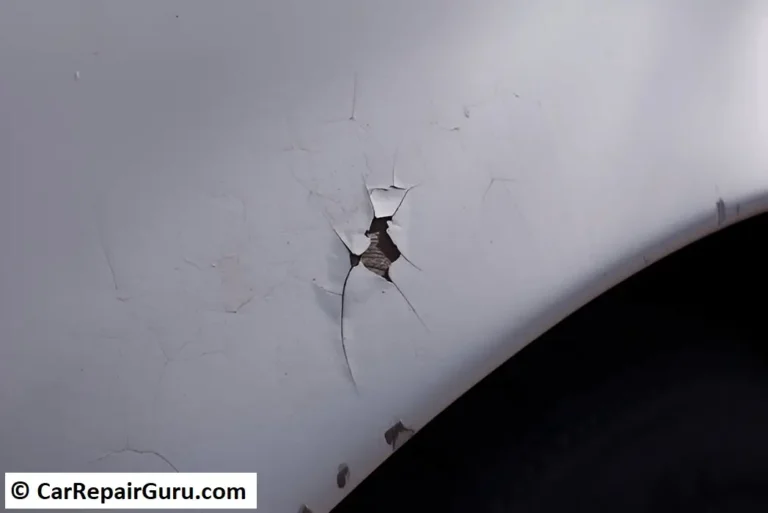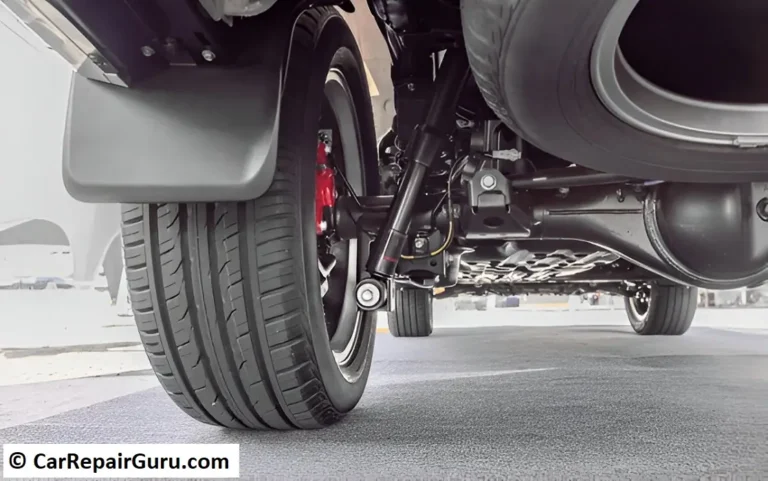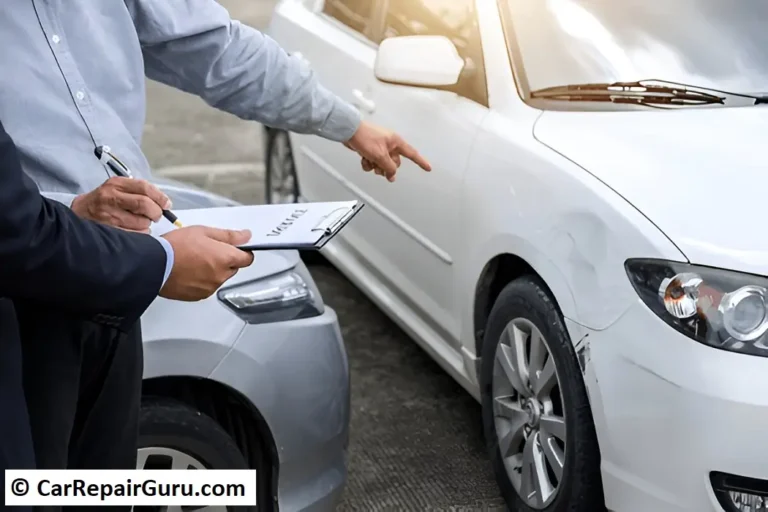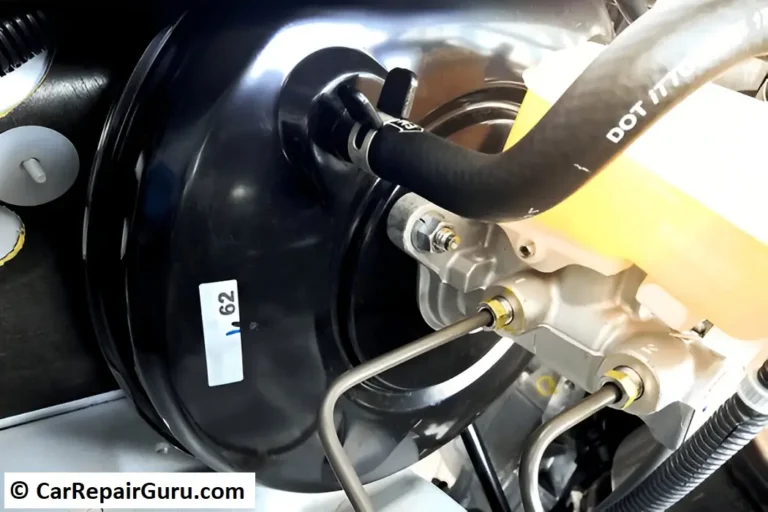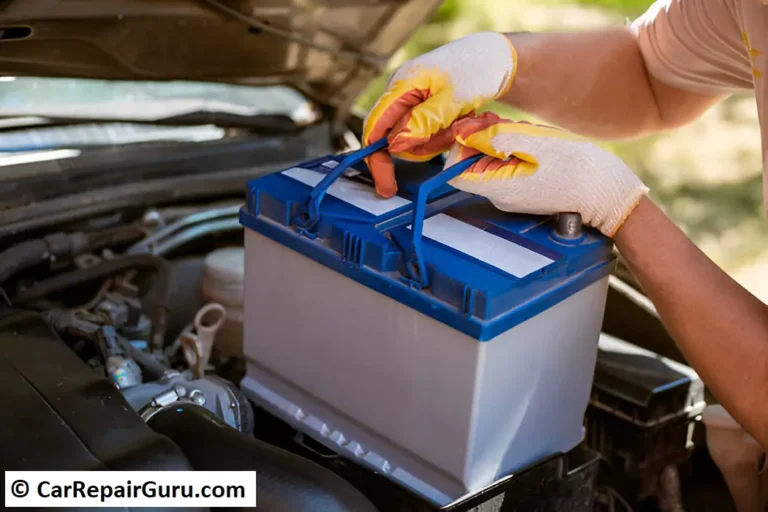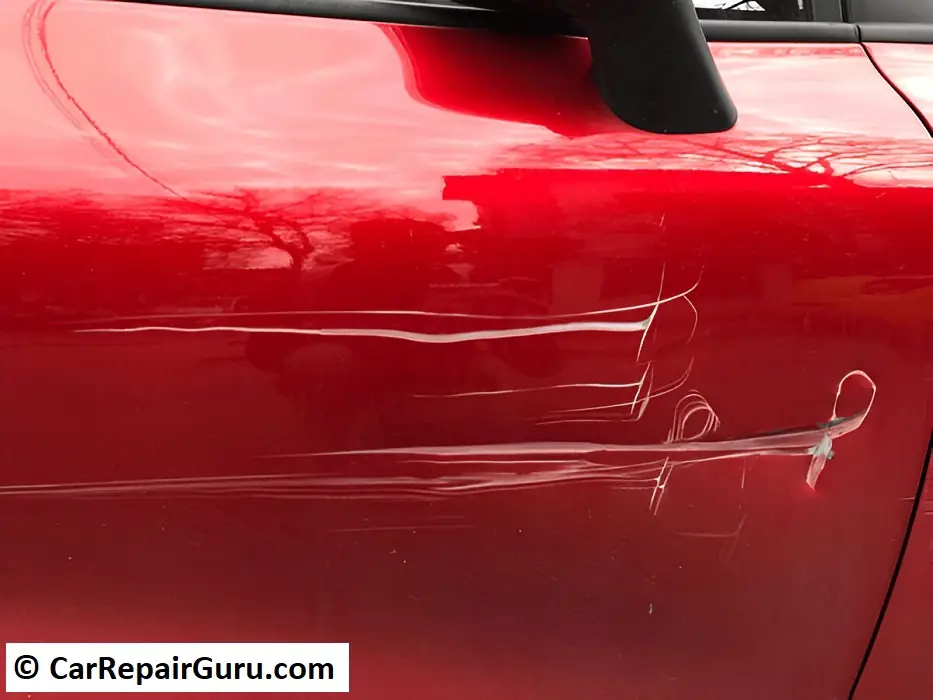
Introduction to Car Scratch Repair
Your car is more than just a means of transportation—it’s a reflection of your personality and care. But no matter how cautious you are, scratches are almost inevitable. From stray shopping carts and careless drivers to harsh weather conditions, your vehicle’s paint job faces countless threats every day.
Ignoring minor scratches might seem harmless, but over time, they can lead to bigger problems. Scratches expose your car’s underlying layers, making it vulnerable to rust and further damage. Plus, they diminish the vehicle’s resale value, leaving a poor first impression on potential buyers.
The good news? Many car scratches can be repaired easily, whether through DIY car scratch repair methods or professional car scratch removal services. This guide will walk you through the different types of scratches, how to assess their severity, and the best ways to fix them—helping you restore your car’s sleek, polished look.
Understanding Car Paint Layers
Before diving into car scratch repair, it’s essential to understand how automotive paint is structured. Your car’s exterior isn’t just a single coat of paint—it’s a multi-layered system designed for durability and protection.
- Clear Coat: This is the outermost transparent layer that provides shine and shields the paint underneath from UV rays, dirt, and minor abrasions. Most light scratches affect only the clear coat and can often be polished out.
- Base Coat (Color Layer): Beneath the clear coat lies the base coat, which gives the car its color. Scratches that penetrate this layer may require touch-up paint to restore the original shade.
- Primer Layer: This layer acts as a bonding agent between the paint and the car’s metal body, ensuring durability. When scratches reach this level, they often appear as a dull gray or white mark and need more extensive paint correction.
- Metal Body (Substrate): If a scratch is deep enough to expose bare metal, rust becomes a serious concern. Immediate repair is crucial to prevent long-term damage and corrosion.
Understanding these layers helps you determine the severity of a scratch and choose the most effective car scratch removal method—whether a simple polish or a full repaint.
Types of Car Scratches
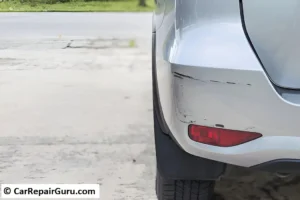
Not all scratches are the same. Understanding the different types of car scratches helps you determine the best car scratch repair method. Here’s a breakdown of the most common types:
1. Clear Coat Scratches (Superficial Scratches)
These are the most minor and only affect the clear coat, the top protective layer of your car’s paint. They often result from automatic car washes, dust particles, or light contact with objects like bushes or clothing. While they don’t affect the color of the car, they can dull the shine and make the surface appear hazy. The good news? These can usually be fixed with scratch remover products, rubbing compounds, or polishing techniques.
2. Base Coat Scratches (Paint Layer Scratches)
These scratches cut through the clear coat and reach the base coat, which gives the car its color. They are often caused by car doors scraping against objects, minor fender benders, or accidental key scratches. Since the car’s color layer is exposed, a simple polish won’t be enough. Instead, a car scratch repair kit with touch-up paint is required to restore the original finish.
3. Primer Scratches
When a scratch penetrates beyond the base coat and into the primer, it appears as a gray or white mark on the car. These scratches are usually caused by deeper impacts, such as minor collisions or falling debris. If left untreated, moisture can seep in, leading to paint peeling and corrosion. Repairing primer scratches typically involves filling, sanding, priming, and repainting the area.
4. Deep Paint Scratches (Exposed Metal Scratches)
These are the most severe scratches, cutting through all the paint layers and exposing the bare metal body. If ignored, they can lead to rust formation, which weakens the structure of the car over time. Deep scratches require professional car scratch repair services or a comprehensive DIY fix involving filler, primer, paint, and a clear coat.
Final Thoughts
Identifying the type of scratch on your car is the first step toward effective scratch removal. Whether it’s a minor clear coat blemish or a deep paint gouge, there’s a solution for every level of damage.
Assessing Scratch Severity
Before jumping into car scratch repair, it’s essential to determine how deep the scratch is. This helps you choose the right scratch removal method and avoid unnecessary work.
Methods to Evaluate Scratch Depth
A simple way to assess a scratch is by using the fingernail test:
- If your fingernail glides smoothly over the scratch, it’s likely a minor clear coat scratch that can be polished out.
- If your fingernail catches, the scratch has gone deeper—possibly reaching the paint or primer layer—and will need touch-up paint or more advanced repair techniques.
- If you see exposed metal, the scratch is severe and requires immediate repair to prevent rust.
Another technique is the water test:
- Apply a few drops of water over the scratch.
- If the scratch disappears temporarily when wet, it’s only in the clear coat and can be buffed out.
- If the scratch remains visible, it has reached the base coat or primer layer and needs repainting.
Tools & Techniques for Accurate Assessment
For more precise evaluation, consider using:
- LED Flashlight: Helps highlight the depth of scratches under direct light.
- Magnifying Glass: Allows for a closer look at deep paint damage.
- Paint Thickness Gauge: Measures the depth of the car’s paint layers to determine the level of damage.
By accurately assessing the severity of a scratch, you can decide whether DIY car scratch repair will suffice or if professional assistance is necessary.
DIY Car Scratch Repair Methods
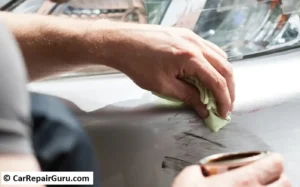
Repairing car scratches yourself can save money and restore your vehicle’s appearance without a trip to the body shop. The method you use depends on the depth and severity of the scratch. Below is a step-by-step guide for fixing clear coat, base coat, primer, and deep scratches effectively.
Fixing Clear Coat Scratches (Light Surface Scratches)
Clear coat scratches are the easiest to fix since they only affect the outermost protective layer. Follow these steps:
Step 1: Clean and Prepare the Area
- Wash the scratched area with car shampoo and water to remove dirt.
- Dry the surface completely using a microfiber cloth.
- Apply isopropyl alcohol (or a prep solvent) to remove any residual wax or grease.
Step 2: Use a Rubbing Compound and Polish
- Apply a small amount of rubbing compound to a clean microfiber cloth.
- Rub the compound in circular motions over the scratch until it begins to fade.
- Once the scratch is less visible, apply a car polish to restore the shine.
- Finish with a car wax to protect the repaired area.
Tip: Avoid using too much pressure, as excessive polishing can thin the clear coat.
Fixing Base Coat Scratches (Paint Layer Scratches)
When the scratch reaches the base coat, simple polishing won’t work. Here’s how to fix it:
Step 1: Sand the Scratch
- Use 2000-3000 grit sandpaper and wet sand the area lightly to smooth out rough edges.
- Keep the surface wet while sanding to prevent further damage.
Step 2: Apply Touch-Up Paint
- Choose the exact color match for your car’s paint (found on the vehicle’s VIN sticker).
- Use a fine brush or a touch-up pen to apply thin layers of paint over the scratch.
- Allow the paint to dry for at least 30 minutes between coats.
Step 3: Blend and Protect
- Once the paint is dry, gently wet sand the area again for smooth blending.
- Apply clear coat over the painted area to seal and protect the repair.
- Finish with a polish and wax to restore shine.
Tip: Avoid applying thick layers of paint at once—it can result in an uneven finish.
Fixing Primer and Deep Scratches (Exposed Metal Scratches)
If a scratch reaches the primer or exposes the metal, immediate repair is crucial to prevent rust.
Step 1: Fill the Scratch
- Clean the area thoroughly and dry it.
- Use a scratch filler or body filler compound to fill deep grooves.
- Let the filler dry completely, then sand it smooth with 1500-2000 grit sandpaper.
Step 2: Apply Primer and Paint
- Spray automotive primer over the repaired area, allowing it to dry fully between coats.
- Lightly sand the primer with fine-grit sandpaper before applying touch-up paint.
- Apply thin layers of matching paint, waiting 30-60 minutes between coats.
Step 3: Seal and Protect
- Once the paint is dry, apply a clear coat to protect the repair.
- Buff the area with polish and wax for a seamless finish.
Tip: Avoid painting in humid or dusty conditions for the best results.
Final Thoughts on DIY Scratch Repair
For minor scratches, DIY fixes can work wonders with rubbing compounds, touch-up paint, and polishing techniques. However, for deep paint scratches or extensive damage, professional repair might be the best option to ensure a perfect finish.
By following these car scratch removal techniques, you can maintain your vehicle’s pristine look without spending a fortune!
Professional Car Scratch Repair Options
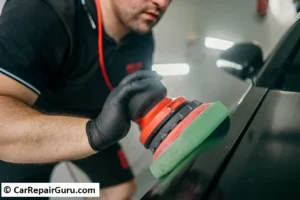
While DIY car scratch repair works for minor damage, some scratches require professional assistance to restore your car’s original look. Below, we’ll cover when to visit an auto body shop, the services they offer, and the factors affecting repair costs.
When to Seek Professional Assistance
Not all car scratches can be fixed with a quick polish or touch-up paint. Here are scenarios where professional repair is the best choice:
✔️ Deep Scratches Exposing Metal – If the scratch has gone through the primer and exposed the bare metal, rust can develop if left untreated. A professional can apply high-quality fillers, primer, and factory-matched paint.
✔️ Extensive Scratches on Large Areas – If multiple scratches cover a large section of the car, a full panel repaint might be necessary for a seamless finish.
✔️ Scratches on Pearlescent or Metallic Paint – Some car paints, like metallic or three-stage pearl finishes, require specialized techniques that only professionals can achieve accurately.
✔️ Lease or Resale Concerns – If you’re returning a leased vehicle or selling your car, a professional repair ensures a flawless finish that maintains its resale value.
Professional Car Scratch Repair Services
Auto body shops offer different levels of scratch repair services, depending on the damage:
🔹 Paint Correction & Buffing – For light surface scratches, professionals use machine polishers and cutting compounds to buff out imperfections and restore shine.
🔹 Scratch & Dent Repair – For medium-depth scratches, a technician may use paint touch-ups, wet sanding, and blending techniques to smooth the area.
🔹 Panel Repainting – For deep scratches, the damaged section is sanded, primed, and repainted to match the rest of the car. This is the best option for severe damage that affects the entire panel.
🔹 Paint Protection Film (PPF) & Ceramic Coating – After repair, professionals may apply a ceramic coating or PPF to prevent future scratches and maintain the paint’s durability.
Cost Considerations & Factors Influencing Pricing
The cost of car scratch repair depends on several factors, including:
💰 Severity of the Scratch – Light scratches may cost $50-$150 for a simple polish, while deep scratches requiring repainting can range from $500-$1,500, depending on the size of the damage.
💰 Location of the Scratch – Repairs on curved areas, doors, or bumpers may require more labor and cost more than flat surfaces like the hood.
💰 Paint Type & Matching – Specialty paints (e.g., metallic or multi-layer coatings) require extra steps, increasing the cost.
💰 Labor Costs by Region – Prices vary depending on your location and the reputation of the auto body shop.
Final Thoughts
If you’re dealing with deep paint scratches or extensive damage, professional repair is the best option to ensure a high-quality, long-lasting fix. While the cost can be higher than DIY scratch repair, the results often justify the investment—especially for maintaining resale value and aesthetics.
Preventing Future Scratches
Keeping your car’s paint scratch-free requires preventive measures and proper maintenance. Below are some of the best ways to protect your vehicle’s exterior and reduce the risk of scratches.
Use Protective Coatings
Applying protective coatings can add an extra layer of defense against minor scratches and environmental damage.
🔹 Clear Bra (Paint Protection Film – PPF) – A transparent, self-healing film applied to high-impact areas like the hood, bumper, and side mirrors. It protects against road debris, rock chips, and minor scratches.
🔹 Ceramic Coating – A liquid polymer that bonds to the car’s paint, providing a hydrophobic layer that resists dirt, swirl marks, and light scratches. Unlike PPF, it doesn’t absorb damage but adds a slick surface that minimizes friction-based scratches.
🔹 Wax & Sealants – While not as durable as PPF or ceramic coatings, applying car wax or paint sealant every few months helps reduce micro-scratches caused by dust and washing.
Safe Washing & Maintenance Practices
Many scratches occur due to improper washing techniques. Follow these steps to minimize damage:
✔️ Use a Two-Bucket Wash Method – One bucket for clean soapy water and another for rinsing dirt off your wash mitt. This prevents grit and debris from scratching the paint.
✔️ Opt for Microfiber Wash Mitts & Towels – Avoid sponges, as they can trap dirt and create fine scratches. Use soft microfiber cloths instead.
✔️ Dry with a Soft Microfiber Towel – Letting water air dry can leave water spots that may require polishing later.
✔️ Avoid Automatic Car Washes with Brushes – These often cause swirl marks and fine scratches. Instead, use a touchless car wash or wash by hand.
✔️ Park Smartly – Avoid parking near bushes, trees, or shopping carts to reduce the risk of accidental scratches.
Final Thoughts
By using protective coatings and following safe car washing techniques, you can significantly reduce scratches and maintain your vehicle’s pristine look. Investing in proper care now will save you time and money on car scratch repairs later!
Conclusion
Car scratches are unavoidable, but addressing them promptly can prevent further damage and maintain your vehicle’s appearance and value. Whether you choose a DIY car scratch repair method for minor surface scratches or seek professional help for deep paint damage, timely action is key.
Additionally, investing in protective coatings like ceramic coating or PPF and following safe washing practices can help prevent future scratches.
By taking proactive steps, you can keep your car looking flawless for years to come. Don’t ignore scratches—repair, protect, and drive with confidence!
Frequently Asked Questions About Car Scratch Repair
Q: Can all car scratches be repaired at home?
A: Minor scratches, such as clear coat scratches, can often be repaired at home using DIY methods. However, deeper scratches that reach the base coat, primer, or metal may require professional repair to achieve optimal results.
Q: How much does professional car scratch repair cost?
A: The cost of professional car scratch repair varies depending on the severity and location of the scratch, as well as the make and model of the vehicle. Minor repairs may cost between $50 to $150, while more extensive damage can range from $500 to $2,000 or more.
Q: Are car scratch repair kits effective?
A: Car scratch repair kits can be effective for minor scratches, particularly those affecting the clear coat. It’s important to follow the instructions carefully and manage expectations, as results may vary based on the scratch’s depth and the quality of the kit.
Q: How can I prevent car scratches?
A: To prevent car scratches, consider applying protective coatings like ceramic or clear bras, practice safe washing techniques using soft mitts and microfiber towels, and be mindful of parking in safe areas away from potential hazards.
